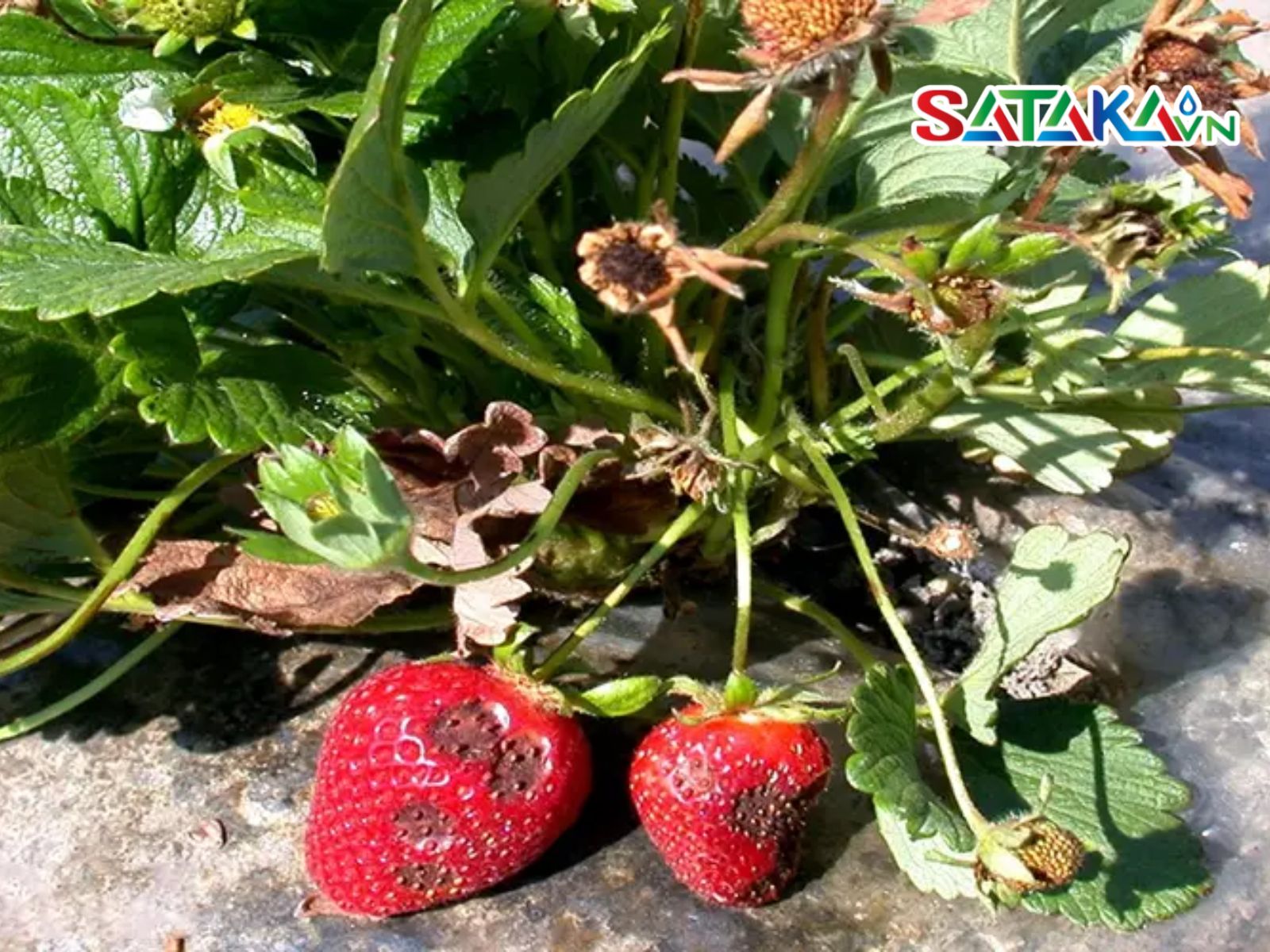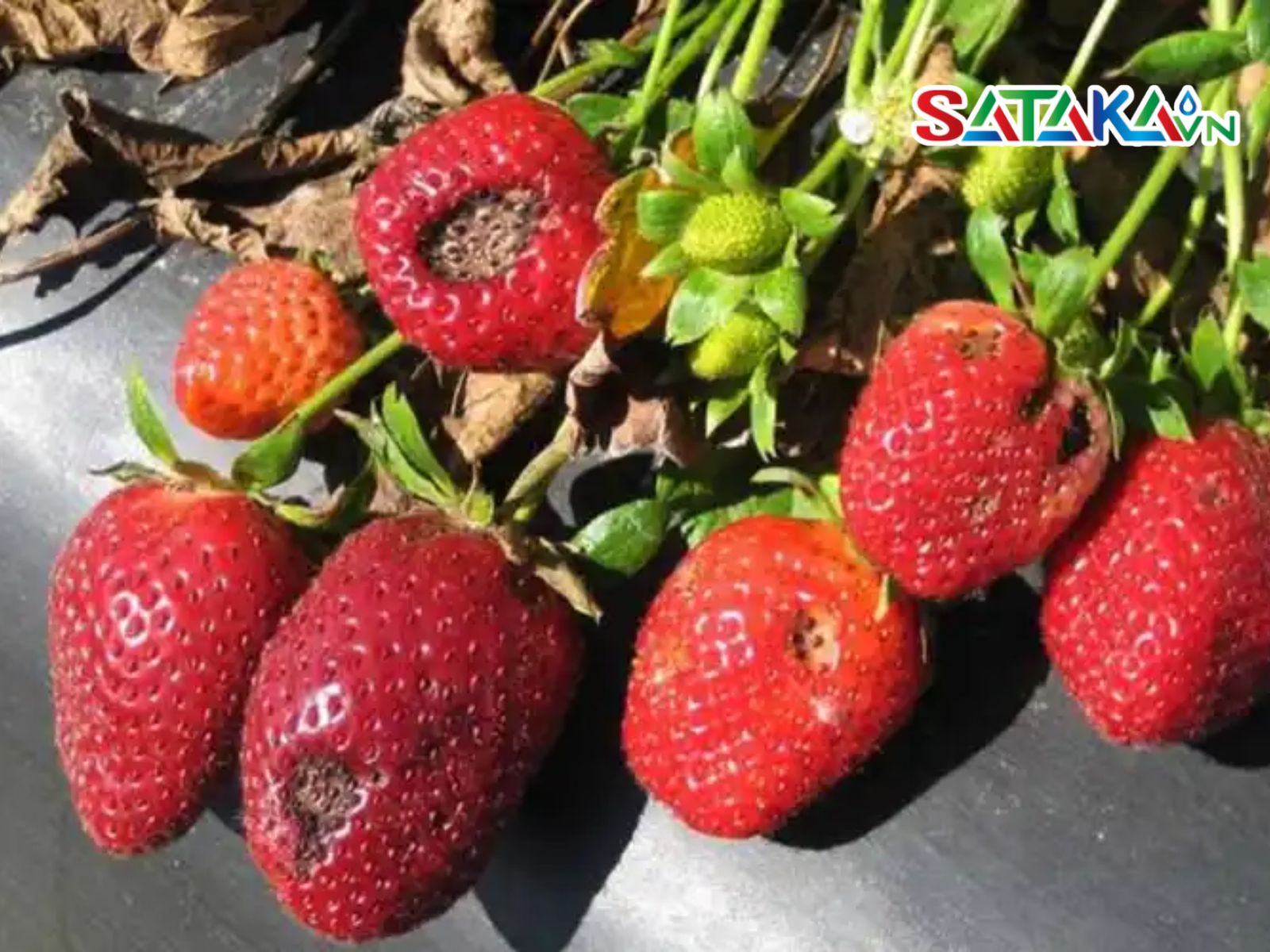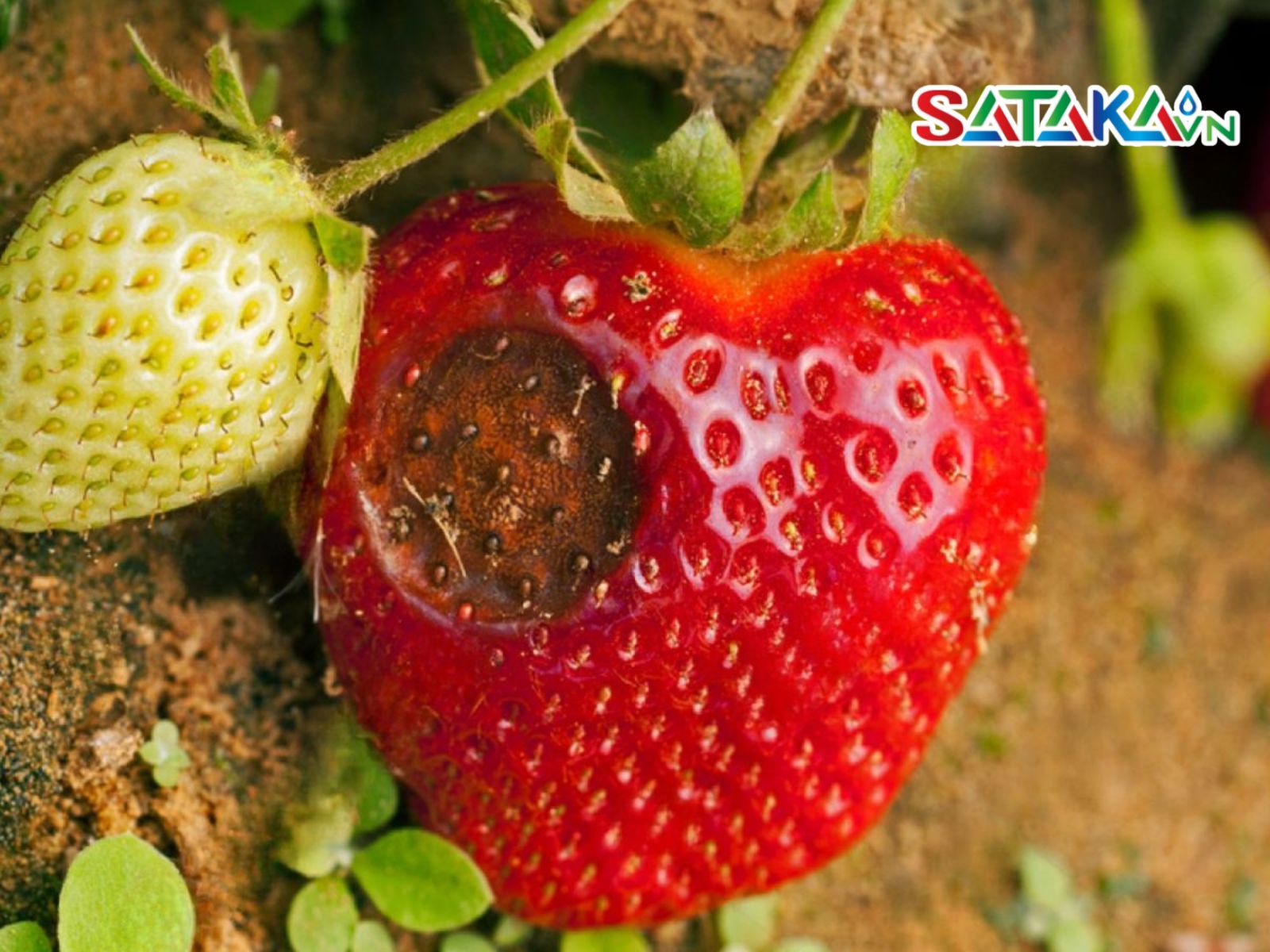Strawberry anthracnose disease causes fruit rot, tip dieback, and a severe decrease in yield. Early detection and proper treatment help protect the strawberry garden effectively.
Strawberries are a high-value crop, but they are also very susceptible to various diseases—especially strawberry anthracnose disease. This fungal disease spreads quickly and can cause significant damage to many farms if not detected and treated in time. To help you protect your crops effectively, let's explore how to prevent and control this disease in the article below with Sataka!
1. Understanding Strawberry Anthracnose Disease? Its Development Conditions
Strawberry anthracnose disease often causes plants to gradually weaken and wilt, reducing their ability to flower and fruit. It can even cause fruits to rot completely, leading to a total loss of commercial value. Notably, the disease often appears when the plants are nearing the harvest stage—a critical period that determines the entire season's yield.
Strawberry anthracnose disease typically breaks out most severely in conditions with high humidity, prolonged rain, and temperatures ranging from 28–30°C. This is an ideal environment for the pathogenic fungus to multiply and spread.
Anthracnose fungal spores can germinate in just 4 hours when they come into contact with water. In addition, the disease spreads very quickly through:
- Wind, rainwater, and irrigation water;
- Unsanitized gardening tools;
- Insects, and direct contact between nearby plants.

Understanding Strawberry Anthracnose Disease? Its Development Conditions
2. Causes of Strawberry Anthracnose Disease
One of the main causes of strawberry anthracnose is the fungus C. fragariae, which belongs to the Colletotrichum species complex—a common fungus that is highly damaging to many crops, especially strawberries.
- The pathogenic fungus persists on plant residue for a long time, especially on unprocessed waste. After harvest, if sanitation is not thorough, the fungus can continue to grow and spread in the following season.
- The fungus can be transmitted through grafting materials, hiding in the grafted buds and stems without clear signs. When conditions are humid and rainy, the fungus quickly causes damage.
- During the rainy season, splashing rainwater carries spores onto the leaves, and strong winds help the spores spread throughout the strawberry garden.
- The pathogen can survive in the soil and on plant residue for up to 9 months, spreading through weeds as well as machinery, tools, and even caretakers.
Explore: Apple Anthracnose: Causes, Symptoms, and Control Methods
3. Symptoms of Strawberry Anthracnose
Below are the characteristic signs that strawberry growers should look out for during the plant's growth cycle:
On the strawberry fruit:
- The fruit begins to show soft, round spots ranging from light brown to dark black, which are often sunken and become hard over time.
- When humidity is high or there is prolonged rain, a pink or orange liquid will ooze from the center of the spots—this is a clear sign of active anthracnose fungus growth.
- Infected fruits often rot, completely lose their commercial value, and tend to fall off prematurely before harvest.
On the shoots, flowers, and leaves:
- Dark, withered spots appearing on the flowers are an early sign that the plant is infected with anthracnose disease.
- Young shoots and flowers are prone to drying out, not blooming, or wilting quickly.
- Leaves may show small black spots, but this symptom alone is not enough to confirm the disease without other accompanying signs.
On the roots and crown:
- One of the most dangerous symptoms is "crown rot"—the crown and roots of the plant turn a silvery-white or reddish-brown color.
- When cutting the diseased crown, you can easily observe the abnormal color within the root tissue.
- Infected plants often wilt completely and gradually die from the roots up to the stem in a short period if not intervened promptly.

Symptoms of Strawberry Anthracnose
4. Strawberry Anthracnose Disease Control Measures
Here are two main approaches to help you minimize the risk of infection and keep your strawberry garden healthy.
4.1 Cultivation Practices
To minimize the risk of a strawberry anthracnose outbreak, you should follow these cultivation techniques:
- Choose healthy, disease-resistant, and well-tested strawberry varieties.
- Plant at an appropriate density to increase air circulation and reduce humidity around the base.
- Prioritize drip irrigation or watering the base, and avoid sprinkler irrigation which can splash fungal spores.
- Cover the base with straw to prevent water from splashing onto the plants; do not use plastic film which retains moisture for a long time.
- Keep the garden clean, removing diseased plant residue and weeds after each season.
- Treat the soil by smoking, sun-drying, or spreading lime powder to kill the pathogenic fungus.
- Detect early, cut, and destroy infected plants to prevent the disease from spreading.
4.2 Biological Measures
In parallel with proper cultivation, you can combine biological products to control strawberry anthracnose disease effectively and sustainably:
- Use biological products containing beneficial bacteria or fungi, such as Bacillus subtilis and Trichoderma spp., to prevent anthracnose.
- Stimulate healthy strawberry plant growth, increasing their natural resistance.
- These products are safe for people and the environment, suitable for organic farming, and leave no residue.
- They improve the soil's microbial system, creating a good environment for the crops.
Combining sensible cultivation practices with modern biological applications will help you proactively prevent strawberry anthracnose effectively, saving costs and ensuring long-term sustainability.

Strawberry Anthracnose Disease Control Measures
Understanding and correctly preventing the disease is the key to helping your strawberry plants grow healthy, flower, and bear fruit consistently, leading to a bountiful harvest. We hope that through this information, you have a clear understanding of the causes, symptoms, and effective control measures for strawberry anthracnose disease. If you encounter any difficulties, do not hesitate to contact Sataka. We are always ready to provide advice and high-quality fungicides to help protect your crops and enhance your yield for the season.
SATAKA VIETNAM JOINT STOCK COMPANY
Address: No. 246 Nguyen Kim Cuong, Tan Thanh Dong Commune, Cu Chi District, Ho Chi Minh City
Hotline: 0856.555.585 or 0789.917.927
Website: https://sataka.com.vn/


